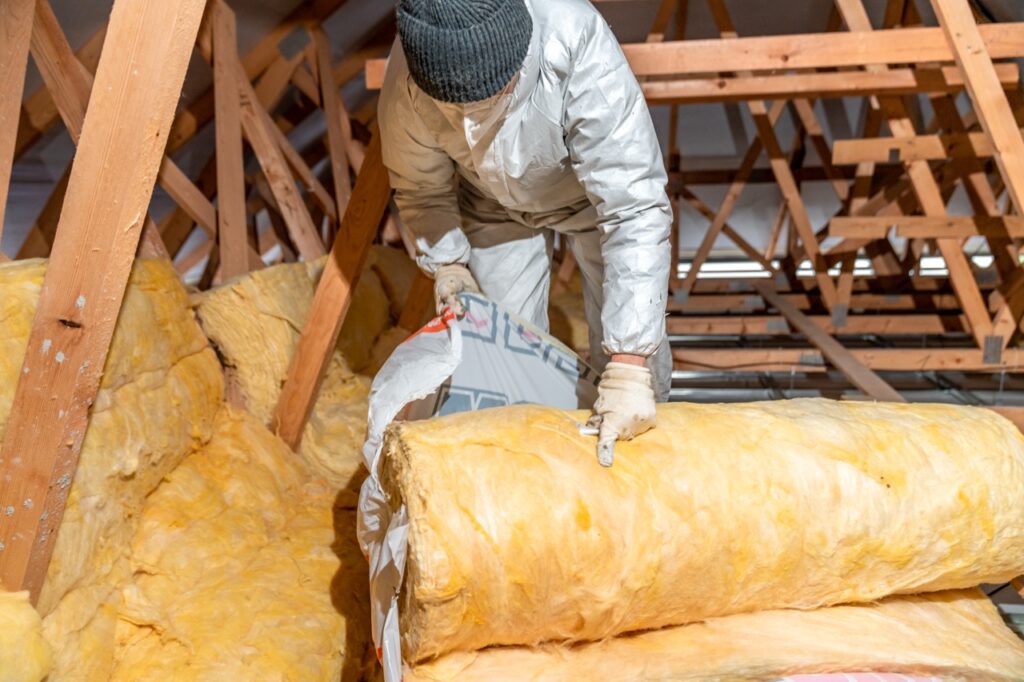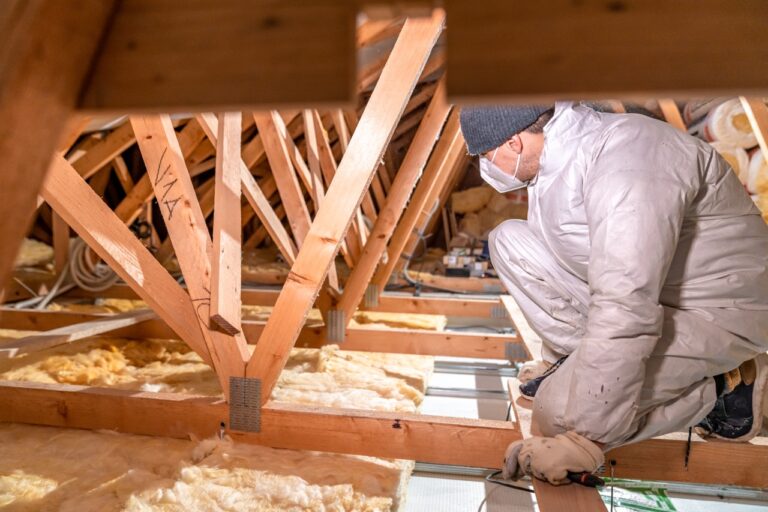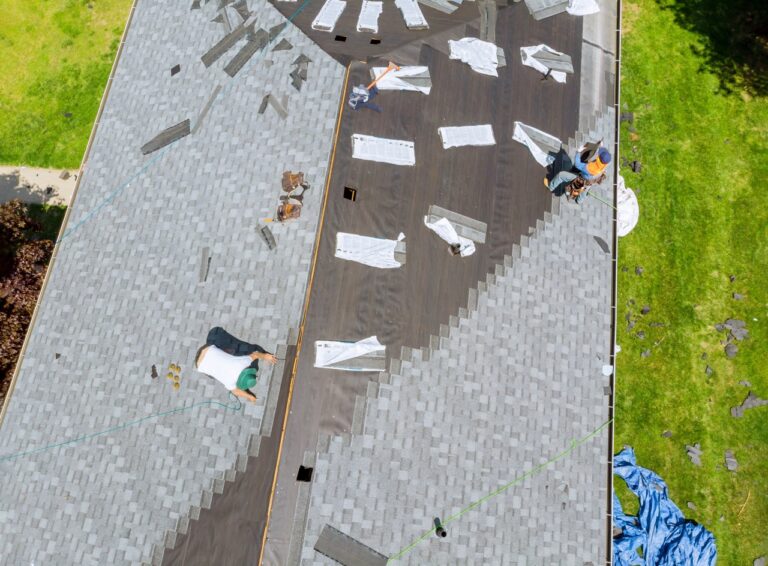Introduction
Does your home feel stuffy or musty even when it’s clean? The issue might be hidden above your ceiling. In many homes, old attic insulation traps years of dust and, when combined with moisture, becomes a breeding ground for mold. While this may seem like a simple maintenance problem, it can quietly affect your respiratory system and even contribute to long-term chronic diseases.
This blog explores how dust and mold in old attic insulation negatively impact indoor air quality and your health. We’ll explain the science behind this connection and offer solutions to reduce the risk before it affects your family.
How Dust and Mold Build Up in Old Insulation
Attic insulation is meant to regulate temperature and improve energy efficiency. Over time, especially in older homes, this insulation begins to break down and collect layers of dust.
Dust in attic insulation includes organic matter such as:
- Skin cells
- Pollen and plant particles
- Textile fibers
- Insect parts
- Animal dander and droppings
When moisture enters the attic due to roof leaks, poor ventilation, or condensation, this dusty insulation becomes a perfect food source for mold spores already present in the air.
Older insulation types like cellulose or fiberglass are especially prone to absorbing dust and retaining moisture. Without regular inspections, this contamination becomes embedded, hard to detect, and potentially dangerous to anyone living in the home.

Mold Spores and Dust Mites in Your Air Supply
Once mold develops, it releases microscopic spores into the surrounding environment. These spores can easily become airborne and make their way into your living space, especially if your HVAC system draws air from the attic or shares ductwork with attic spaces.
Along with mold, dust mites thrive in dusty insulation. These mites feed on organic particles in dust and are one of the leading triggers of asthma and allergies.
Studies show that exposure to dust mite allergens and mold spores can:
- Increase airway inflammation
- Trigger asthma attacks
- Cause eye, nose, and throat irritation
- Lead to sneezing, coughing, and sinus congestion
Children, seniors, and people with compromised immune systems are especially at risk. If symptoms worsen at night or during certain seasons, your attic may be the hidden culprit.
Related issues with duct circulation are discussed in our HVAC system page.
The Link Between Poor Indoor Air Quality and Chronic Disease
When mold and dust stay in your environment over long periods, the damage can go beyond allergies. Prolonged exposure has been linked to more serious chronic health conditions such as:
- Asthma
- Chronic Obstructive Pulmonary Disease (COPD)
- Hypersensitivity pneumonitis
- Bronchitis
- Long-term fatigue and immune dysfunction
Research from the Environmental Protection Agency (EPA) and the Centers for Disease Control (CDC) confirms that mold exposure can impair lung function, particularly in environments with low air circulation.
In homes where the insulation is over 20 years old or has sustained water damage, these risks become significantly higher. Mold-contaminated insulation essentially turns the attic into a reservoir of toxins slowly leaking into your breathable air.
Warning Signs You Should Not Ignore
You don’t have to see visible mold for it to impact your health. The signs of hidden mold in your attic insulation often appear first in your body. Watch for these symptoms:
- Recurring sinus infections
- Persistent coughing without illness
- Shortness of breath or tightness in the chest
- Unexplained skin irritation or rashes
- Increased sensitivity to smells
- Asthma symptoms worsening indoors
In addition to health changes, your home may show clues: - Musty odor that persists despite cleaning
- Discoloration on ceilings or near attic vents
- Warm rooms despite running your HVAC system
- Increased dust accumulation on surfaces
If these symptoms improve when you spend time outside the home, your indoor environment, especially the attic, may be the source.

How to Break the Cycle and Improve Air Quality
Dealing with dust and mold in attic insulation starts with identifying and eliminating the source. Use the following steps to restore air safety in your home:
- Inspect the attic regularly for mold, discoloration, or damp insulation
- Check your ventilation system to ensure proper airflow and humidity control
- Seal HVAC ducts and air gaps to prevent contamination from spreading
- Upgrade insulation to mold-resistant and moisture-repelling materials
- Use air purifiers and dehumidifiers in living spaces to control allergens
- Fix leaks and roof damage immediately to prevent further moisture intrusion
If insulation is visibly damaged or damp, it must be professionally removed and replaced. Learn more about attic insulation upgrades on our roofing and insulation page.
How Attic Air Impacts the Entire Home
Your attic is not isolated from the rest of your home. Heat rises, and with it, airborne particles from the attic can flow downward. During warmer months, attics heat up and accelerate the movement of mold spores and dust into lower floors.
Even if your attic doesn’t share ducts with your main HVAC system, warm air transfer and leaks can allow particles to pass through ceiling openings, light fixtures, or improperly sealed vents.
This makes the attic one of the most important places to monitor when it comes to maintaining indoor air quality and avoiding chronic exposure to harmful contaminants.
High-Risk Groups to Protect
Some people are more vulnerable to the effects of attic mold and dust. Special precautions should be taken in homes with:
- Children under 10
- Elderly residents
- Pregnant women
- Individuals with asthma or COPD
- People undergoing chemotherapy or with weakened immune systems
For these groups, even mild exposure can lead to serious consequences such as respiratory infections or long-term lung damage.
Prevention Is the Best Cure
It’s easier and more affordable to prevent attic mold and dust buildup than to remediate it after health symptoms appear. Take action by:
- Scheduling an annual attic inspection
- Using moisture barriers and attic fans
- Choosing high-quality, mold-resistant insulation
- Avoiding storage of cardboard or paper in attic spaces
- Keeping vents and exhaust fans directed outside the attic
By implementing these steps, you can create a home environment that supports long-term respiratory health and reduces the risk of chronic conditions developing from prolonged exposure.
Conclusion
The relationship between dust, mold, and old attic insulation is more dangerous than many homeowners realize. Once mold spores and dust mites become part of your indoor air, the damage to your respiratory system can be subtle but lasting. Chronic coughing, allergies, asthma, and even more serious lung diseases are often tied to poor indoor air quality that begins in hidden spaces like the attic.
Taking a proactive approach can protect your home, your health, and your family’s future.
Take Action to Protect Your Health
If you suspect that your attic insulation is outdated or contributing to poor indoor air quality, it’s time to act. Serenity Home Remodeling provides expert insulation removal and replacement, along with full HVAC support and indoor air quality improvements. Use the contact form to schedule a professional assessment and take control of your home’s health today.

FAQ
Can mold in attic insulation cause asthma?
Yes. Mold spores from attic insulation can trigger asthma symptoms and attacks, especially in children and those with existing respiratory conditions.
How does dust in attic insulation affect air quality?
Dust carries allergens like pollen and mites, which can circulate through your home and worsen breathing issues over time.
Is mold in insulation always visible?
No. Mold can grow inside insulation material where it isn’t visible. A musty smell is often the first warning sign.
Can I get sick from breathing attic air?
Yes. If the attic contains mold or dust buildup, spores and allergens can enter your breathing space and lead to health problems.
What are the long-term effects of exposure to attic mold?
Prolonged exposure can lead to asthma, COPD, chronic sinusitis, fatigue, and even immune disorders.
Is replacing insulation enough to remove the risk?
If done properly with mold-resistant materials and ventilation improvements, yes. But addressing moisture sources is essential.
How can I tell if my attic insulation is too old?
If insulation is more than 15 to 20 years old, looks compacted or discolored, or has a strong odor, it’s time to replace it.
Can HVAC systems spread attic contaminants?
Absolutely. Shared ductwork or unsealed systems can move mold spores and dust throughout your living areas.
Is attic mold more dangerous than surface mold?
Yes. Because it’s hidden, it can grow undetected and impact your health over long periods before you even realize it’s there.
What is the safest insulation for respiratory health?
Closed-cell spray foam and treated fiberglass with mold-resistant additives are among the best choices for healthier indoor air.


















